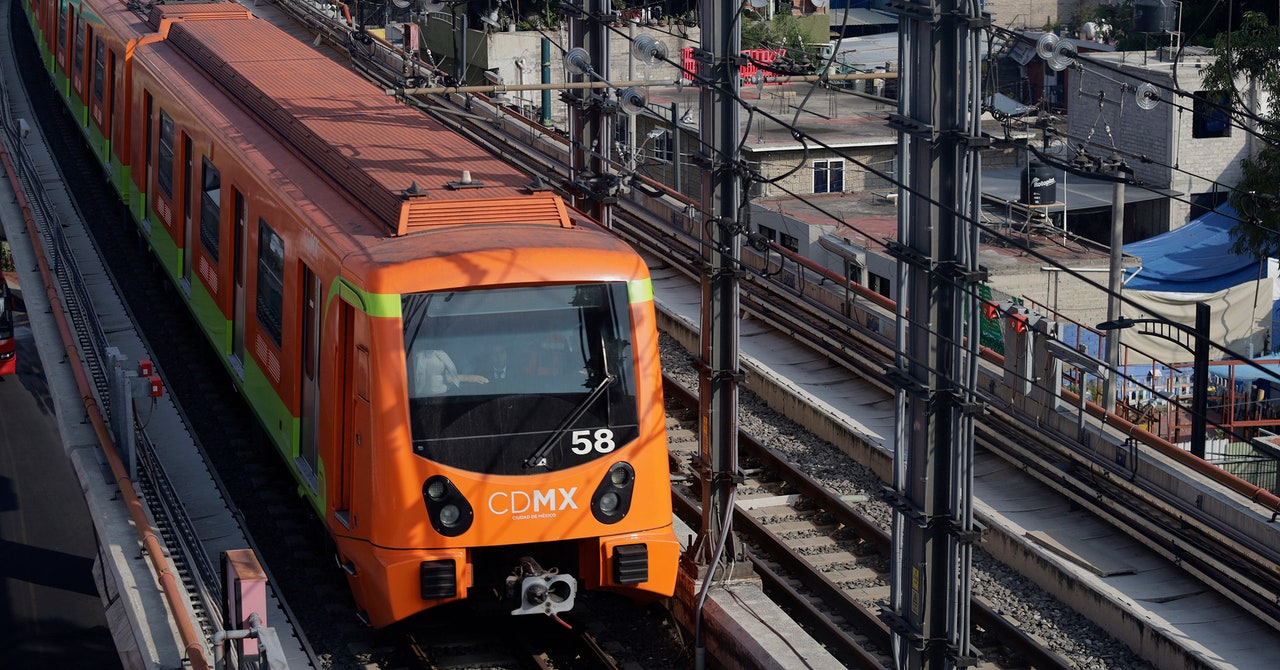Solano‐Rojas and his colleagues found a subsidence in the area of an overpass near Olivos train station that collapsed in 2021 when a subway train passed over it. “We did some of this analysis before 2021 and found that there were different shifts in this area,” says Solano-Rojas. “We said, ‘Oh yeah, it looks like something could happen here in the future.’ We think it’s no coincidence that we found this.” Solano-Rojas was careful to note that the potential contribution of subsidence to the disaster requires further assessment, and official investigations have cited construction errors but made no mention of subsidence.
For this study, researchers looked at the above-ground subway infrastructure, not the subway segments — essentially the parts of the system they could visually inspect. (The photo below shows the differential subsidence of columns supporting an overpass.) But by providing the system’s operators with information about how quickly the infrastructure might weaken, their work can hopefully serve as a basis for intervention. For example, engineers can place material under railroad tracks to restore lost heights. But strengthening the subway could pose a far greater challenge. “We don’t have a concrete solution for this,” says Shirzaei. “When that happens, in most cases it simply results in the project being canceled and an attempt to open a new trail.”
Courtesy of Darius Solano-Rojas
This isn’t just Mexico City’s problem. Earlier this year, Shirzaei and his colleagues found that the East Coast’s infrastructure was in serious trouble due to slower but steady subsidence. They calculated that 29,000 square miles of the Atlantic coast are exposed to sinking of up to 0.08 inches per year, affecting up to 14 million people and 6 million properties. About 1,400 square miles are sinking by up to 0.20 inches annually.
The researchers found that differential subsidence not only threatens railways, but also all types of other critical infrastructure such as dikes and airports. A metropolis like New York City has the additional problem of the sheer weight pressing on the ground, which in itself leads to subsidence. The Bay Area is also sinking. On both coasts, subsidence is significantly exacerbating the problem of sea level rise: the land is sinking while at the same time the water is rising.
Wherever this happens in the world, people must stop over-extraction of groundwater to slow groundwater decline. New systems are already relieving pressure on the aquifers. For example, it is becoming increasingly cheaper to convert toilet water into drinking water. And more and more cities are building “sponge” infrastructure — lots of green spaces that allow stormwater to seep into the aquifer below, essentially re-inflating the land to prevent subsidence. Such efforts are becoming increasingly urgent as climate change worsens droughts in many parts of the world, including Mexico City, and places ever greater strain on groundwater supplies.
As satellite data increases, cities can get a better handle on the land subsidence they cannot immediately avoid. “I really feel like governments have an opportunity to use these types of studies to create a more structured action plan,” says Solano-Rojas.
